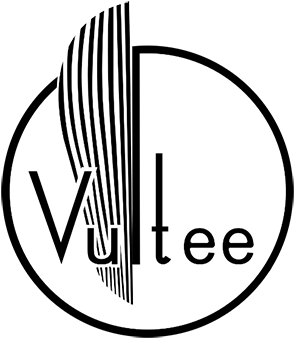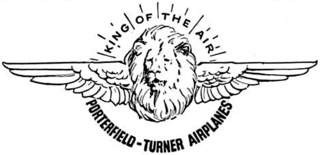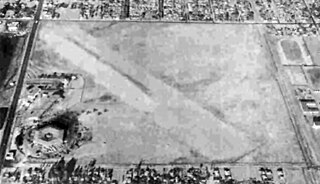| | |
| Industry | Aerospace |
|---|---|
| Founded | 1936 |
| Founders | Max B. Harlow |
| Defunct | 1954 |
| Fate | Sold to Vultee Aircraft in 1941 |
| Successor | Vultee Aircraft |

Harlow Aircraft Company was an American aircraft manufacturer at Alhambra Airport, Alhambra, California.
| | |
| Industry | Aerospace |
|---|---|
| Founded | 1936 |
| Founders | Max B. Harlow |
| Defunct | 1954 |
| Fate | Sold to Vultee Aircraft in 1941 |
| Successor | Vultee Aircraft |

Harlow Aircraft Company was an American aircraft manufacturer at Alhambra Airport, Alhambra, California.
The company was founded in 1936 by professor Max B. Harlow to build the Harlow PJC-2 a production version of the PJC-1. The aircraft had been designed and built as a class project at Pasadena Junior College. [1] Harlow had worked with Howard Hughes on the Hughes H-1 racer. Hughes in turn later backed Harlow's enterprise. Flight operations were conducted at Alhambra Airport in the former Western Air Express hangar. [2] The PJC-2 was followed by a military training version the Harlow PC-5. The PC-5 rights were purchased by Cub Aircraft Limited for wartime production. Harlow in turn bought one-third interest in Porterfield Aircraft Corporation. [3] A majority interest in the company was bought by Intercontinent Corporation in 1941 [4] [ failed verification ] [5] [ failed verification ] who then sold the company to Vultee Aircraft.[ citation needed ] The company and facilities were subsequently used to build aircraft assemblies and components throughout the war.
In 1945 the company bought the manufacturing rights to the Interstate Cadet from Interstate Aircraft and Engineering Corporation, which had decided to focus on the production of appliances. [6] Harlow also bought Alhambra Airport for $350,000 that year ($5.92 million in 2023), with the intention of building the Cadet there, but resold the aircraft rights to Call Aircraft Company in 1946 for $5,000 ($78,000 in 2023), and the airport to real-estate developers. [7] The company halted operations later that year, although it continued to exist until at least 1954. [8]
| Model name | First flight | Number built | Type |
|---|---|---|---|
| Harlow PJC-1 | 1937 | 1 | Single engine cabin monoplane |
| Harlow PJC-2 | 11 | Single engine cabin monoplane | |
| Harlow PJC-4 | N/A | 0 | Unfinished military trainer |
| Harlow PC-5 | 1939 | 33+ | Military trainer |
| Harlow PC-6 | 1 | Modified version of PC-5 | |

Howard Robard Hughes Jr. was an American aerospace engineer, business magnate, film producer, investor, philanthropist, and pilot. He was best known during his lifetime as one of the richest and most influential people in the world. He first became prominent as a film producer, and then as an important figure in the aviation industry. Later in life, he became known for his eccentric behavior and reclusive lifestyle—oddities that were caused in part by his worsening obsessive-compulsive disorder (OCD), chronic pain from a near-fatal plane crash, and increasing deafness.

The Hughes H-4 Hercules is a prototype strategic airlift flying boat designed and built by the Hughes Aircraft Company. Intended as a transatlantic flight transport for use during World War II, it was not completed in time to be used in the war. The aircraft made only one brief flight, on November 2, 1947, and the project never advanced beyond the single example produced.

The Hughes Aircraft Company was a major American aerospace and defense contractor founded on February 14, 1934 by Howard Hughes in Glendale, California, as a division of Hughes Tool Company. The company was known for producing, among other products, the Hughes H-4 Hercules aircraft, the atmospheric entry probe carried by the Galileo spacecraft, and the AIM-4 Falcon guided missile.
Carnival Air Lines Incorporated was a charter and scheduled airline division of the Carnival Corporation & plc that started in 1988 after Carnival Cruise Lines purchased Pacific Interstate Airlines. It was headquartered in Dania Beach, Florida.
The Call Aircraft Company was established by Reuel Call in 1939 at Afton, Wyoming to build a touring aircraft of his own design.
Flying Wild is a 1941 film directed by William Beaudine under the pseudonym "William West" as the fifth installment of the East Side Kids series which eventually totaled 22 films. The film is the team's first one in the spy film genre.

Vultee Aircraft, Inc., was an aircraft manufacturer founded in 1939 in Los Angeles County, California, when the Vultee Aircraft Division of the aviation holding company AVCO was reorganized as an independent company. It had limited success before merging with the Consolidated Aircraft Corporation on March 17–18, 1943, to form the Consolidated Vultee Aircraft Corporation − or Convair.

Northeast Airlines was an American airline based in Boston, Massachusetts that chiefly operated in the northeastern United States, and later to Canada, Florida, the Bahamas, Los Angeles and other cities. It was acquired by and merged into Delta Air Lines in August 1972.

Kinner Airplane & Motor Corp was an airplane and engine manufacturer, founded, in the mid-1920s, in Glendale, California, United States, by Bert Kinner, the manager of Kinner Field. Kinner's chief engineer was Max B. Harlow who later founded the Harlow Aircraft Company. It went bankrupt in 1937, and the aircraft rights were sold to O.W. Timm Aircraft Company. The engine department was rearranged as Kinner Motor Inc in 1938, but collapsed in 1946. Kinner became the West Coast's largest producer of aircraft engines in 1941.

The Interstate Cadet was an American two-seat tandem, high wing, single-engine monoplane light aircraft. Around 320 of these aircraft were produced between the years 1941 and 1942 by the Interstate Aircraft and Engineering Corporation based in El Segundo, California. The construction techniques employed were a welded steel tube fuselage, wood (spruce) wing structure with metal ribs, and fabric covering, all of which were fairly standard in the 1940s.

Cub Aircraft was a Canadian aircraft manufacturer established at Hamilton, Ontario in 1937, originally to manufacture Piper Cubs for the Canadian market. Production was interrupted by World War II, In 1941 they also commenced building Harlow PJC-5s. Although the company resumed business afterwards, it did not survive for more than a few years.

The Harlow PJC-2 was a 1930s American four-seat cabin monoplane, designed by Max Harlow.

The Harlow PC-5 was a 1930s American military trainer version of the PJC-2, and was designed and built by the Harlow Aircraft Company.
The Helio Aircraft Company was an American aircraft manufacturer founded in 1948.

Grand Central Airport is a former airport in Glendale, California. Also known as Grand Central Air Terminal (GCAT), the airport was an important facility for the growing Los Angeles suburb of Glendale in the 1920s and a key element in the development of United States aviation. The terminal, located at 1310 Air Way, was built in 1928 and still exists, owned since 1997 by The Walt Disney Company as a part of its Grand Central Creative Campus (GC3). Three hangars also remain standing. The location of the single concrete 3,800-foot (1,200 m) runway has been preserved, but is now a public street as the runway was dug up and converted into Grand Central Avenue.

Interstate Aircraft and Engineering Corporation was a small American aircraft manufacturer in production from April 1937 to 1945, based in El Segundo, California.

The Porterfield Aircraft Corporation was an American aircraft design and manufacturing company founded in 1934 in Kansas by Edward E. Porterfield.
Max B. Harlow was an American aircraft engineer, educator, and producer.

California during World War II was a major contributor to the World War II effort. California's long Pacific Ocean coastline provided the support needed for the Pacific War. California also supported the war in Europe. After the Japanese attack on Pearl Harbor on December 7, 1941, most of California's manufacturing was shifted to the war effort. California became a major ship builder and aircraft manufacturer. Existing military installations were enlarged and many new ones were built. California trained many of the troops before their oversea deployment. Over 800,000 Californians served in the United States Armed Forces. California agriculture, ranches and farms were used to feed the troops around the world. California's long coastline also put the state in fear, as an attack on California seemed likely. California was used for the temporary and permanent internment camps for Japanese Americans. The population grew significantly, largely due to servicemen who were stationed at the new military bases/training facilities and the mass influx of workers from around the U.S. in the growing defense industries. With all the new economy activity, California was lifted out of the Great Depression. Over 500,000 people moved to California from other states to work in the growing economy. California expanded its oil and mineral production to keep up with the war demand.

Alhambra Airport also called the Western Air College Airport was an airport in Alhambra, California from 1928 to 1946. The Airport was founded by the Western Air Express on 157-acre of land. The airport had a single 2,830-foot asphalt northeast–southwest runway. The Western Air Express built a unique hangar, that was a 44-foot hexagonal shape able to work on 6 aircraft at once. Western Air Express also build an air terminal building and a conventional hangar. Western Air Express at the opening operated Fokker F-32 from the airport. Western Air Express held a large dedication ceremony on April 17, 1930 for the new air terminal. The US Forest Service operated a patrol aircraft out of the airport to keep an eye out on the nearby San Gabriel Mountains. Just one year after the dedication ceremony, both Western Air Express and Transcontinental, which also had flights out of the airport, moved to the Burbank Airport and Glendale Grand Central Airport. With no scheduled flights, the Alhambra Airport became a private airport. A Western Air College flight school opened at the airport and some other small commercial operations. With Hollywood only 15 miles away the Alhambra Airport became a popular spot to shoot movies. The 1936 movie 13 Hours by Air directed by Mitchell Leisen and starring Fred MacMurray and Joan Bennett was shot at the airport. In 1939 the film Danger Flight was shot at the airport, directed by Howard Bretherton, starring John Trent as Tailspin Tommy Tompkins, Marjorie Reynolds, Milburn Stone and Jason Robards Sr. The film featured young aviation enthusiasts in a model club. The four-seat cabin monoplane, Harlow PJC-2 designed by Max B. Harlow was built at the Alhambra Airport in 1937. To support the build-up of the World War 2 effort, the Alhambra Airport was used as a depot for Lockheed Corporation military airplanes, many P-38 Lightning fighters aircraft came, were packed and departed the depot on the Lend Lease Program. In 1941 the Flying Wild and They Met in Bombay were shot at the airport. In 1942 the movie Flight Lieutenant was shot at the airport. In 1943 the airport was sold to the city. Harlow Aircraft Company purchased the airport in 1945. Harlow Aircraft Company had been building small aircraft at the airport since 1936 in small qualities. In 1946 Harlow Aircraft Company sold the airport to real estate developers, the north part of the site is now commercial property and the remaining is houses. The Airport was located at what is now Valley Boulevard to the north, New Ave to the east, Almansor Street to the west and the Interstate 10 to the south. Western Air Express later became part of Western Airlines. Western Air College Airport also operated out of the Rosemead Airport for some years. Western Air Express operated out of the Vail Airport in Montebello before moving its operation to the Alhambra Airport.